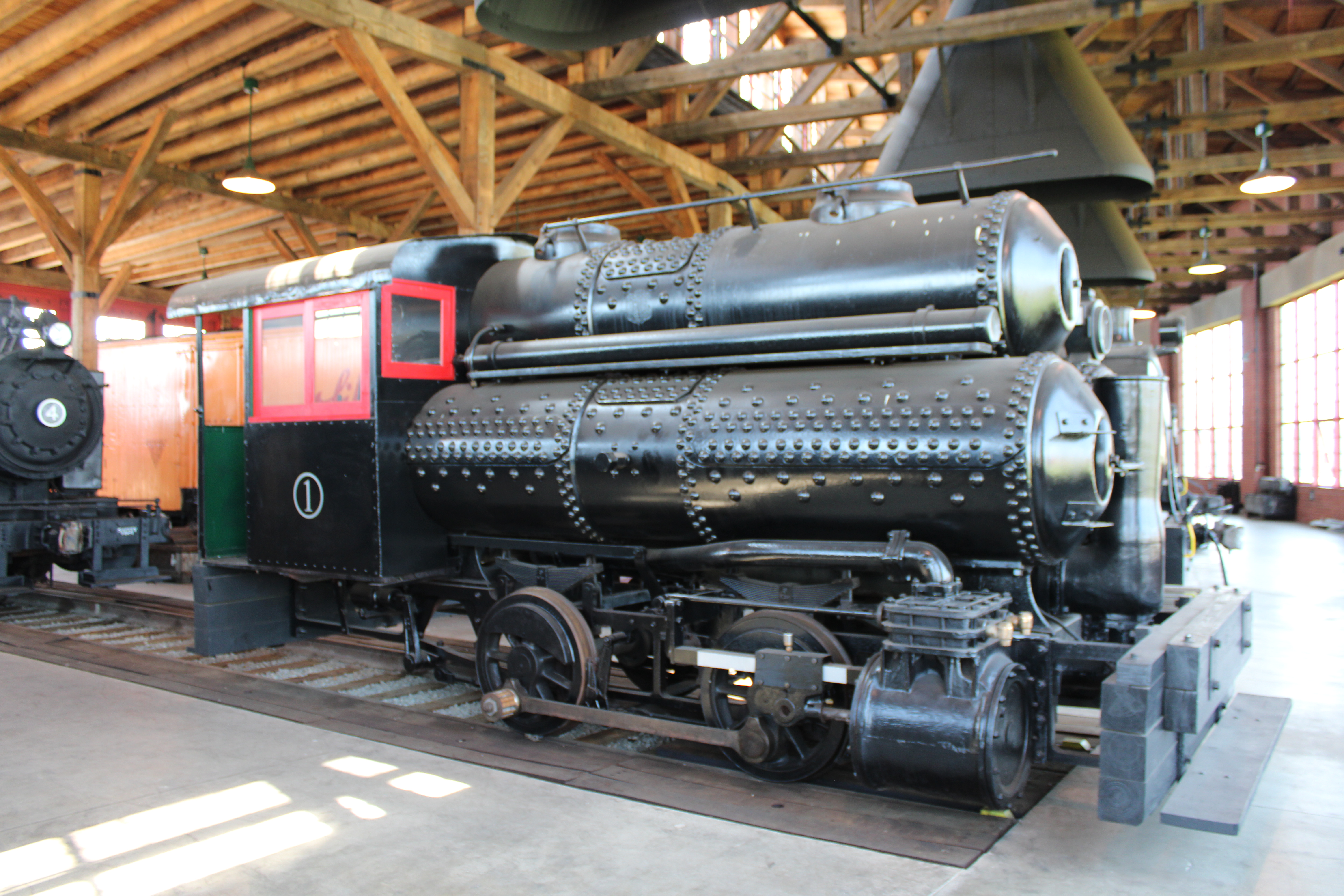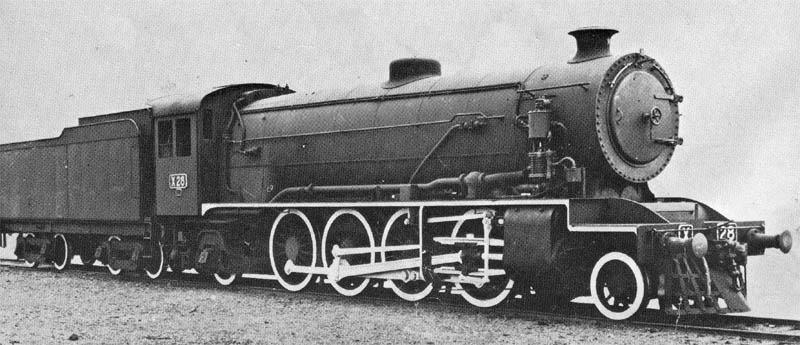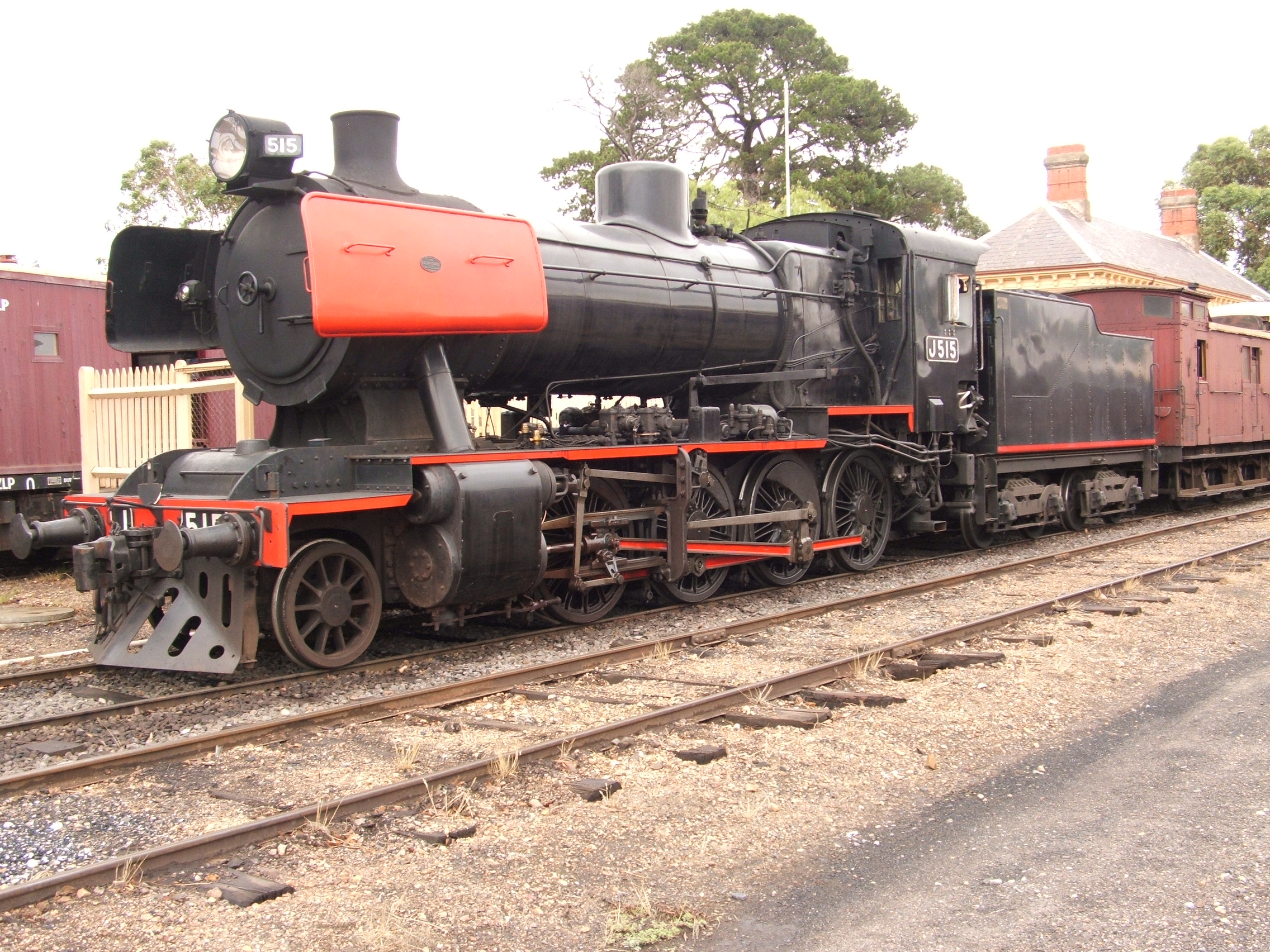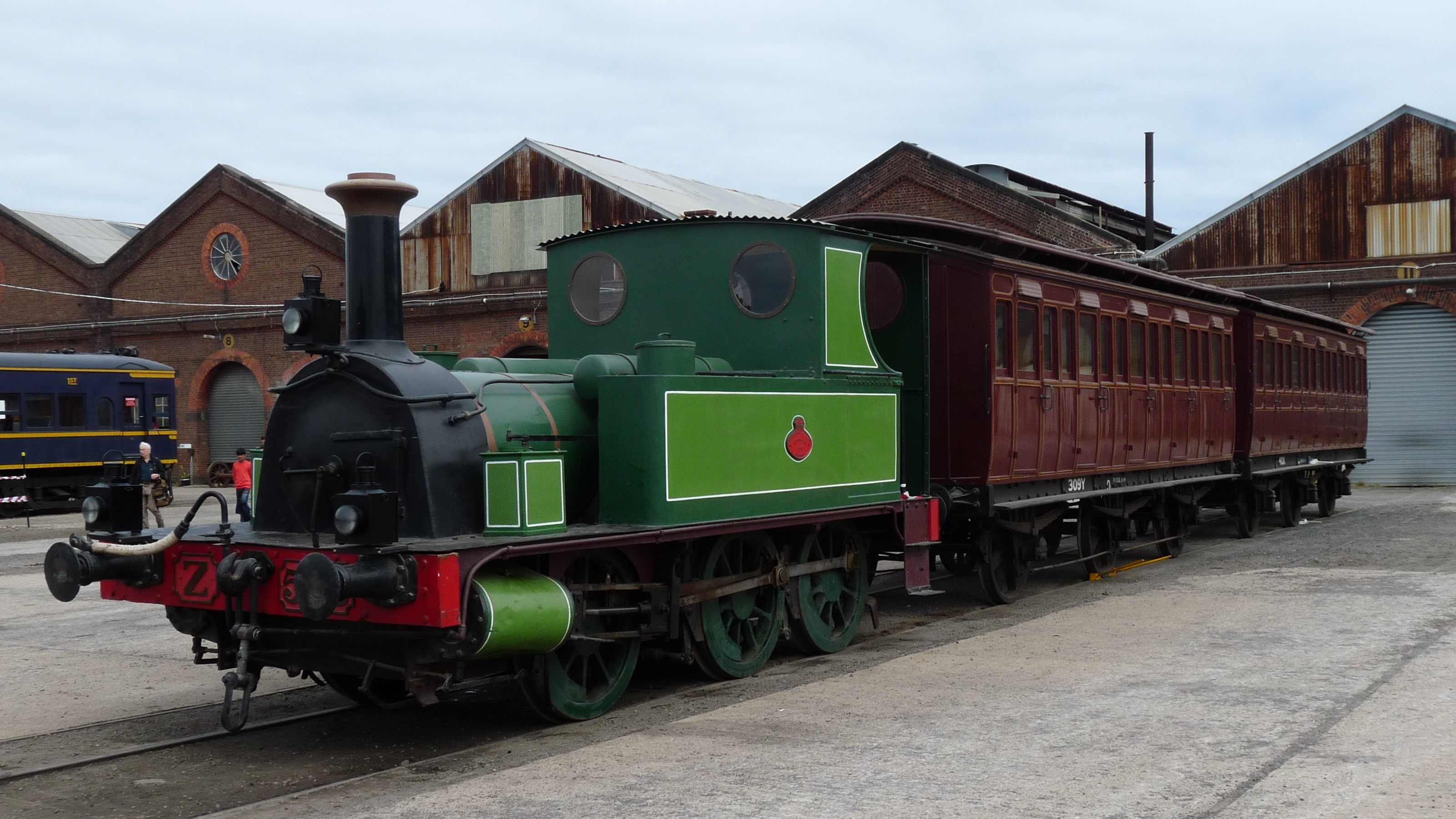|
Age Of Steam Roundhouse
The Age of Steam Roundhouse Museum, located in Sugarcreek, Ohio, United States, is a museum roundhouse housing steam and diesel locomotives, passenger cars and other vintage United States and Canadian railroad equipment. History The roundhouse was built by Jerry Joe Jacobson, former CEO of the Ohio Central Railroad System (OCRS). In October 2008, Jacobson sold his interest in OCRS to Genesee & Wyoming, including the track, modern equipment, and most of the workshops and depots. Jacobson kept a collection of vintage steam and diesel locomotives, other old equipment, and a depot at Sugarcreek, Ohio. He bought 34 acres in Sugarcreek and began constructing a roundhouse to house his collection. The roundhouse building was completed in 2011 and all of the steam locomotives, along with a few other select pieces of rolling stock in Jacobson's collection, were moved inside the roundhouse that same year. It was the "first large roundhouse built in the United States since 1951," with the ... [...More Info...] [...Related Items...] OR: [Wikipedia] [Google] [Baidu] |
Sugarcreek, Ohio
Sugarcreek is a village in Tuscarawas County, Ohio, United States. The population was 2,373 at the 2020 census. It is known as "The Little Switzerland of Ohio". Located in Ohio's Amish Country, the village is part of a large regional tourism industry. In the center of town stands one of the world's largest cuckoo clocks, which was previously featured on the cover of the ''Guinness World Records'' book in 1977. History Sugarcreek's historical beginnings were rooted in cheese production. Swiss immigrants arrived in the early 1830s and used the milk from Amish dairy farms to produce their cheese. In the 1950s they created an annual Ohio Swiss Festival; the success of early festivals as an attraction for tourists resulted in local business leaders transforming the town into a Swiss village starting in 1965. By the early 1970s the first tourist-oriented businesses were opening, and the tourism industry in Sugarcreek was centered not only around the Amish but also around a steam ... [...More Info...] [...Related Items...] OR: [Wikipedia] [Google] [Baidu] |
Baldwin Locomotive Works
The Baldwin Locomotive Works (BLW) was an American manufacturer of railway locomotives from 1825 to 1951. Originally located in Philadelphia, Pennsylvania, it moved to nearby Eddystone, Pennsylvania, Eddystone in the early 20th century. The company was for decades the world's largest producer of steam locomotives, but struggled to compete when demand switched to diesel locomotives. Baldwin produced the last of its 70,000-plus locomotives in 1951, before merging with the Lima Locomotive Works, Lima-Hamilton Corporation on September 11, 1951, to form the Baldwin-Lima-Hamilton Corporation. The company has no relation to the E.M. Baldwin and Sons of New South Wales, Australia, a builder of small diesel locomotives for sugar cane railroads. History: 19th century Beginning Matthias W. Baldwin, the founder, was a jeweler and whitesmith, who, in 1825, formed a partnership with machinist David H. Mason, and began making bookbinders' tools and cylinders for calico printing. Baldwin t ... [...More Info...] [...Related Items...] OR: [Wikipedia] [Google] [Baidu] |
2-8-2
Under the Whyte notation for the classification of steam locomotives, represents the wheel arrangement of two leading wheels on one axle, usually in a leading truck, eight powered and coupled driving wheels on four axles and two trailing wheels on one axle, usually in a trailing truck. This configuration of steam locomotive is most often referred to as a Mikado, frequently shortened to Mike. It was also at times referred to on some railroads in the United States as the McAdoo Mikado and, during World War II, the MacArthur. The notation 2-8-2T indicates a tank locomotive of this wheel arrangement, the "T" suffix indicating a locomotive on which the water is carried in tanks mounted on the engine rather than in an attached tender. Overview The 2-8-2 wheel arrangement allowed the locomotive's firebox to be placed behind instead of above the driving wheels, thereby allowing a larger firebox that could be both wide and deep. This supported a greater rate of combustion and t ... [...More Info...] [...Related Items...] OR: [Wikipedia] [Google] [Baidu] |
YW 19 At Cottage Grove Station Aug 1971xRP - Flickr - Drewj1946
YW may refer to: * Yw (digraph) * Air Nostrum (IATA code YW) * Yreka Western Railroad The Yreka Western Railroad Company was a shortline railroad that operated freight train, freight trains and passenger excursions between the Central Oregon and Pacific Railroad, Central Oregon & Pacific interchange at Montague, CA, Montague and ... (reporting mark YW) * Y-Wing, a ''Star Wars'' starfighter * A US Navy hull classification symbol: Water barge, self propelled (YW) * Yottawatt, or 1024 watt {{disambiguation ... [...More Info...] [...Related Items...] OR: [Wikipedia] [Google] [Baidu] |
McCloud Railway 19
McCloud River Railroad 19 is a preserved 2-8-2 "Mikado" type steam locomotive in the United States that worked on the Caddo and Choctaw Railroad, United States Smelting, Refining and Mining Company, McCloud River Railroad, Yreka Western Railroad, and the Oregon, Pacific, and Eastern Railway. It was purchased new from the Baldwin Locomotive Works (BLW) in April 1915. Shortly after retirement, the engine operated on the Yreka Western before being moved up to Cottage Grove, Oregon to run on the OP&E. In the late 1980s, No. 19 was sent back down to Yreka, California to run on the YW. In April of 1994, the engine returned to McCloud, California to run a series of excursions on the McCloud, Railway. It has since been used in the films ''Emperor of the North Pole'', ''Bound for Glory'', and '' Stand By Me.'' As of 2025, No. 19 is being restored at the Age of Steam Roundhouse in Sugarcreek, Ohio. History Revenue service No. 19 was built by the Baldwin Locomotive Works in April 1915 as ... [...More Info...] [...Related Items...] OR: [Wikipedia] [Google] [Baidu] |
2-8-0
Under the Whyte notation for the classification of steam locomotives, represents the wheel arrangement of two leading wheels on one axle, usually in a leading truck, eight powered and coupled driving wheels on four axles, and no trailing wheels. In the United States and elsewhere, this wheel arrangement is commonly known as a Consolidation, after the Lehigh and Mahanoy Railroad’s ''Consolidation'', the name of the first 2-8-0.White, John H. Jr. (1968). ''A history of the American locomotive; its development: 1830-1880''. New York: Dover Publications, p. 65. The notation 2-8-0T indicates a tank locomotive of this wheel arrangement, the "T" suffix indicating a locomotive on which the water is carried in side-tanks mounted on the engine rather than in an attached tender (rail), tender. The Consolidation represented a notable advance in locomotive power. After 1875, it became "the most popular type of freight locomotive in the United States and was built in greater quantities tha ... [...More Info...] [...Related Items...] OR: [Wikipedia] [Google] [Baidu] |
Buffalo Creek And Gauley Railroad
The Buffalo Creek and Gauley Railroad (BC&G) was a railroad chartered on April 1, 1904 and ran along Buffalo Creek in Clay County, West Virginia. The original Buffalo Creek and Gauley ended service in 1965. The BC&G was one of the last all-steam railroads, never operating a diesel locomotive to the day it shut down on February 27, 1965. Its primary purpose was to bring coal out of the mountains above Widen to an interchange with the Baltimore and Ohio Railroad at Dundon. Route Beginning at Dundon, the line ran east along Buffalo Creek to a terminus away at Widen. Along the way, it passed marked locations at Avoca, Sand Fork, the company towns of Cressmont and Swandale, and Eakle. Swandale contained the sawmill for lumber operations of the Elk River Coal and Lumber Company (ERC&L) and there was a small dairy at Cressmont. The railroad terminates at the Rich Run Coal mine yard in Widen. At Avoca, the ERC&L logging line ran about out in the woods where the logging was don ... [...More Info...] [...Related Items...] OR: [Wikipedia] [Google] [Baidu] |
Iron Horse Buffalo Creek And Gauley Railroad No
Iron is a chemical element; it has chemical symbol, symbol Fe () and atomic number 26. It is a metal that belongs to the first transition series and group 8 element, group 8 of the periodic table. It is, by mass, the abundance of the chemical elements#Earth, most common element on Earth, forming much of Earth's outer core, outer and inner core. It is the fourth most abundance of elements in Earth's crust, abundant element in the Earth's crust, being mainly deposited by meteorites in its metallic state. Extracting usable metal from iron ores requires kilns or Metallurgical furnace, furnaces capable of reaching , about 500 °C (900 °F) higher than that required to smelting, smelt copper. Humans started to master that process in Eurasia during the 2nd millennium BC and the use of iron tools and weapons began to displace list of copper alloys, copper alloys – in some regions, only around 1200 BC. That event is considered the transition from the Bronze Age to the Iron ... [...More Info...] [...Related Items...] OR: [Wikipedia] [Google] [Baidu] |
Railroad Museum Of Pennsylvania
Rail transport (also known as train transport) is a means of transport using wheeled vehicles running in tracks, which usually consist of two parallel steel rails. Rail transport is one of the two primary means of land transport, next to road transport. It is used for about 8% of passenger and freight transport globally, thanks to its energy efficiency and potentially high speed. Rolling stock on rails generally encounters lower frictional resistance than rubber-tyred road vehicles, allowing rail cars to be coupled into longer trains. Power is usually provided by diesel or electric locomotives. While railway transport is capital-intensive and less flexible than road transport, it can carry heavy loads of passengers and cargo with greater energy efficiency and safety. Precursors of railways driven by human or animal power have existed since antiquity, but modern rail transport began with the invention of the steam locomotive in the United Kingdom at the beginning of th ... [...More Info...] [...Related Items...] OR: [Wikipedia] [Google] [Baidu] |
Brooklyn Eastern District Terminal
The Brooklyn Eastern District Terminal was a shortline railroad and marine terminal with its main facilities and administrative offices located on 86–88 Kent Avenue (now part of East River State Park and Bushwick Inlet Park) in the Williamsburg section of Brooklyn, New York City. Background The BEDT was first organized in 1906 as a marine and navigation company independent of the railroad operations of the ''East River Terminal Railroad'', incorporated in 1907, but its parentage precedes that date to the company Palmer's Docks. Palmer's Docks was the original combined rail-marine operation, and from all research to date, it was the first rail-marine terminal to operate in Brooklyn. The BEDT was not large, with a cumulative total of of track at its peak. However, BEDT had many locomotives and was 100% steam-powered until 1963. It would be the largest of the four independent rail-marine terminals in Brooklyn, the others being Bush Terminal Company, Jay Street Terminal (Jay Stre ... [...More Info...] [...Related Items...] OR: [Wikipedia] [Google] [Baidu] |
0397 Strasburg - Railroad Museum Of Pennsylvania - Flickr - KlausNahr
Year 397 ( CCCXCVII) was a common year starting on Thursday of the Julian calendar. In the Roman Empire, it was known as the Year of the Consulship of Caesarius and Atticus (or, less frequently, year 1150 ''Ab urbe condita''). The denomination 397 for this year has been used since the early medieval period, when the Anno Domini calendar era became the prevalent method in Europe for naming years. Events By place Roman Empire * Revolt of Alaric I: Stilicho traps the Visigoths under King Alaric in the Peloponnese, but decides to abandon the campaign against the Visigoths in Greece, thus allowing King Alaric to escape north to Epirus with his loot. Presumably, Stilicho left Greece in order to prepare for military action in northern Africa, where a rebellion (see Gildonic Revolt in 398) seemed imminent. *Emperor Honorius passes a law making barbarian styles of dress illegal in the city of Rome. As a result of this law, everybody in Rome is forbidden from wearing boots, tr ... [...More Info...] [...Related Items...] OR: [Wikipedia] [Google] [Baidu] |
0-6-0
is the Whyte notation designation for steam locomotives with a wheel arrangement of no leading wheels, six powered and coupled driving wheels on three axles, and no trailing wheels. Historically, this was the most common wheel arrangement used on both Tender (rail), tender and tank locomotives in versions with both Cylinder (locomotive), inside and outside cylinders. In the United Kingdom, the Whyte notation of wheel arrangement was also often used for the classification of electric and diesel-electric locomotives with side-rod coupled driving wheels. Under the UIC classification, popular in Europe, this wheel arrangement is written as C if the wheels are coupled with rods or gears, or Co if they are independently driven, the latter usually being electric and diesel-electric locomotives. Overview History The 0-6-0 configuration was the most widely used wheel arrangement for both Tender (rail), tender and tank locomotive, tank steam locomotives. The type was also widely used fo ... [...More Info...] [...Related Items...] OR: [Wikipedia] [Google] [Baidu] |






